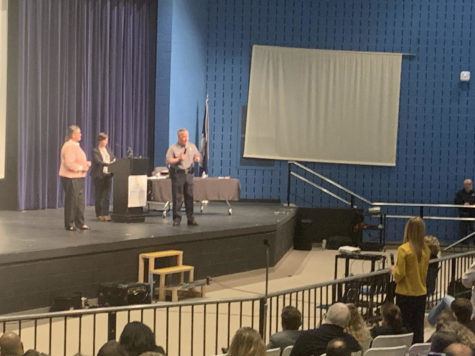Opioid Awareness Meeting
Fairfax High School Auditorium
In the United States, there exists a rising opioid epidemic, where drug-related fatalities increase every year. The class of drugs consist of pain relievers, which fall under both prescription medication, and illegal drugs. Of these drugs, fentanyl is a powerful opioid, being fatal in very small doses. It is responsible for most deaths caused by overdoses in Fairfax County. The biggest concern is the fact that fentanyl is reaching the hands of adolescents. Within the county in 2022, there were four cases of fentanyl overdoses in the 0-17 age group. But the problem exists not only within the county, the drug has become an issue internationally.
According to a study published in the Journal of the American Medical Association, fentanyl-related fatalities among adolescents increased from 253 in 2019, to 884 in 2021. An excerpt from the study reads, “Increasing adolescent overdose deaths, in the context of increasing availability of illicit fentanyls, highlight the need for accurate harm-reduction education for adolescents and greater access to naloxone and services for mental health and substance use behaviors.” This states the importance of education on the matter towards adolescents.
A community meeting was held at Fairfax High School on Monday, March 13, joined by FCPS superintendent Dr. Michelle Reid and county police chief Kevin Davis to bring awareness upon the epidemic. The meeting seated 350 people at the school’s auditorium. Throughout, breakdowns of how the drug worked by medical experts and law enforcement officers, discussing its lethality, and availability to adolescents within the country. Moreover, members of the community who have directly been affected by the epidemic shared their testimonies.
By the end of the meeting, a Q&A was held by the organizers of the event to answer any last minute questions attendees may have had. It was also for anyone who had any additional comments they wished to share. Many shared concerns regarding subjects such as the provision of naloxone in schools and homes, the agent used to prevent an opioid overdose. There were some ideas also that were suggested by attendees. “I agree with implementing parts of this program into health and social studies curriculums.” Diana Wabar, an attendee of the meeting said.

The presentation did meet positive reception, and seems to have opened up discussions, and concerns for the subject. “It’s sad to say that people have lost their loved ones,” Maria Mateus, another attendee stated after the meeting had ended. “And these moments are the things that make us think about [the problem] and reflect on it.”
Hopes of spreading the awareness are high, as stated by FCPS superintendent Michelle Reid, “We’re planning to have this presentation provided to students and featured at high schools.” As the problem grows, it is apparent that information is shared to the people who are most vulnerable to it. With that, another meeting will be held on April 24; location and additional information currently unannounced.



